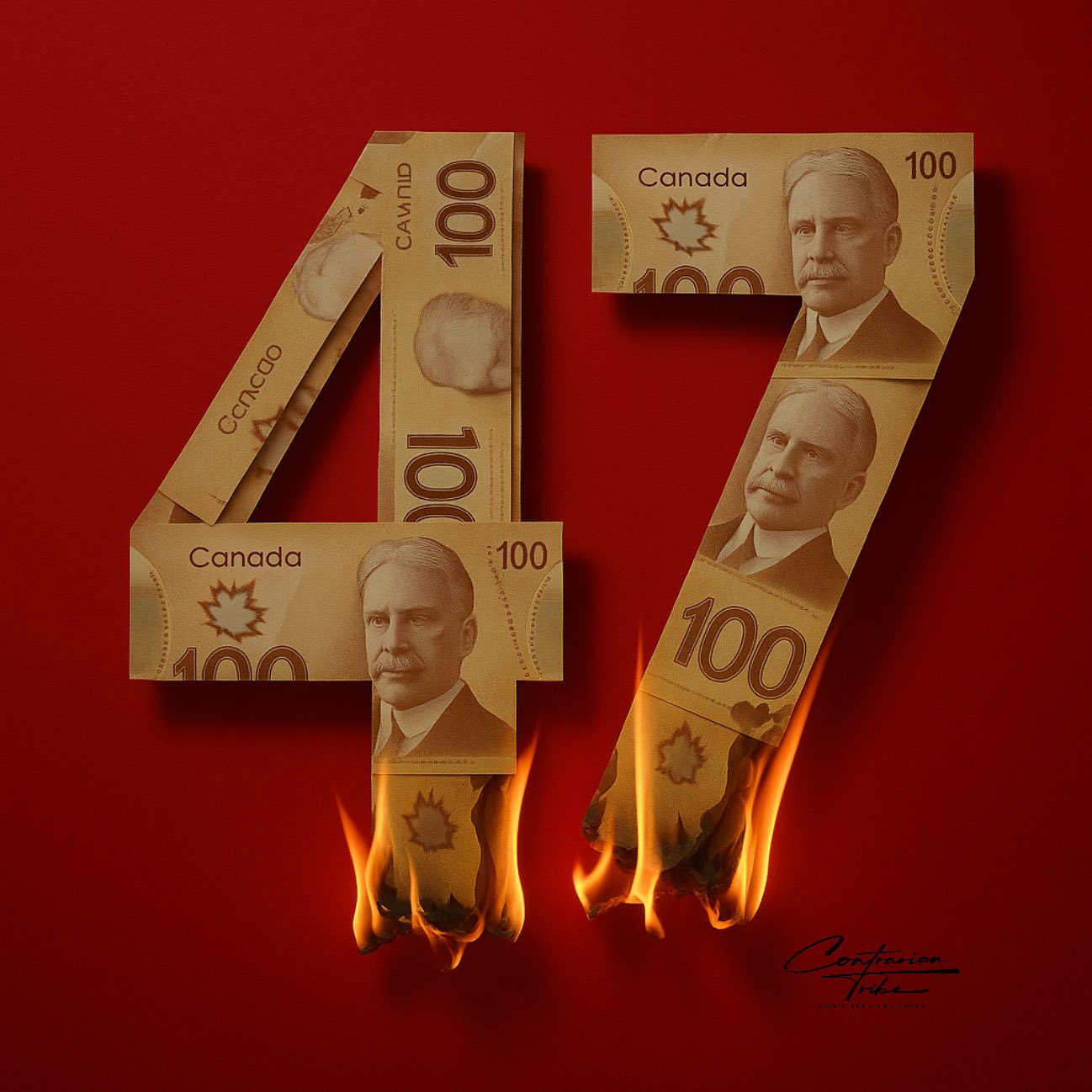Canada, long viewed as a stable and prosperous G7 nation, is now facing a troubling economic decline. Despite collecting taxes through 47 different streams, the country’s growth is stagnating, productivity is falling, and household debt is among the highest in the OECD.
A Nation of Taxes
From federal and provincial income taxes to sales taxes, carbon taxes, property taxes, capital gains taxes, import duties, excise taxes, and countless fees and levies, Canadian citizens and businesses are burdened by a complex and heavy tax regime. This tax web funds a sprawling government sector, public pensions, universal healthcare, generous social programs, and transfers to provinces.
• Personal Income Tax • Corporate Income Tax • Goods and Services Tax (GST) • Harmonized Sales Tax (HST) • Fuel Excise Tax • Alcohol Excise Duty • Tobacco Excise Duty • Cannabis Excise Duty • Vehicle Air Conditioner Tax • Carbon Tax • Luxury Tax • Air Travellers Security Charge • Customs Duties/Tariffs • Capital Gains Tax • Alternative Minimum Tax (AMT) • Kiddie Tax • Financial Institutions Capital Tax • Excise Tax on Insurance Premiums • Canada Pension Plan (CPP) Contributions • Employment Insurance (EI) Premiums • Corporate-Level Equity Repurchase Tax • Provincial/Territorial Personal Income Tax • Provincial/Territorial Corporate Income Tax • Provincial Sales Tax (PST) • Quebec Sales Tax (QST) • Provincial Surtaxes • Land Transfer Tax • Speculation and Vacancy Tax (SVT) • Provincial Fuel Tax • Provincial Tobacco Tax • Provincial Alcohol Tax • Health Premiums • Quebec Parental Insurance Plan (QPIP) Premiums • Provincial Property Tax • Freehold Oil and Gas Production Tax • Insurance Premiums Tax • Tourism Levy • 911 Levy • Non-Resident Land Transfer Tax • Provincial Carbon Tax • Sugar Sweetened Beverage Tax • Municipal Property Tax • Municipal Land Transfer Tax • Business Tax • School Taxes
Yet despite this immense fiscal intake, economic performance remains alarmingly poor:
- GDP growth per capita has been negative for years.
- Productivity is declining, with Canada ranking second last among OECD countries in output per hour worked.
- Investment in business innovation and infrastructure is weak, as tax burdens and regulatory red tape deter entrepreneurs.
- The housing affordability crisis persists, with major cities among the least affordable globally, fueled by policy distortions, restrictive zoning, and high construction costs.
- Public sector bloat absorbs vast revenues without proportional returns in service quality or economic competitiveness.
Where Does the Money Go?
Critics argue that taxes are not driving productivity-enhancing investments. Instead, funds are directed to:
- Expanding bureaucracies
- Administering complex redistributive programs
- Servicing rising public debt interest
Rather than empowering the private sector to create jobs and innovate, Canada’s tax system has become a mechanism for wealth redistribution, leaving little incentive for growth. Even natural resource royalties, once a powerful engine of wealth, are constrained by environmental policies, lack of new pipelines, and regulatory delays.
The Offshore Perspective
For international investors and Canadians considering offshore diversification, this trend is a warning:
- High taxation does not guarantee economic strength. Productivity, innovation, and capital investment remain the true drivers of prosperity.
- Canada’s debt-to-GDP ratio continues to rise, undermining long-term fiscal sustainability.
- With negative per capita GDP growth, the Canadian dollar risks weakness, threatening purchasing power.
Conclusion
Despite collecting taxes from 47 distinct sources, Canada’s economy is slipping. Policymakers must recognize that taxation without strategic investment in productivity leads only to stagnation. For offshore investors, the lesson is clear: Diversify into regions where taxation is efficient, capital is respected, and growth is policy priority, not bureaucracy.

Leave a Reply